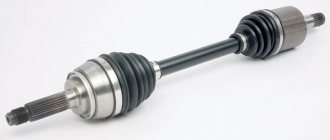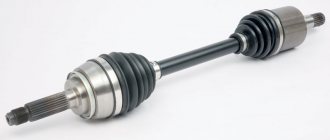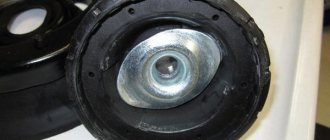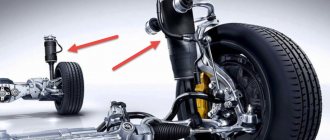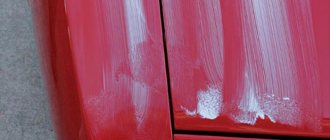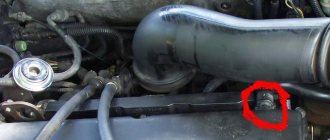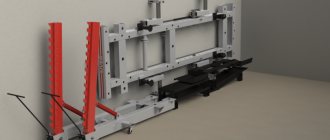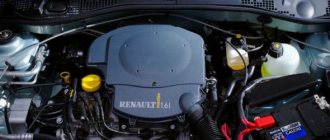Timing mechanism stands for “gas distribution mechanism”. Which is designed to provide the engine with a combustible mixture and release combustion products into the atmosphere. It coordinates the valves, which alternately open and close in the order necessary for the correct operation of the engine.
The timing belt in a car acts as a connecting element between the camshaft and the crankshaft. It is thanks to the timing belt that the camshaft allows the valves to temporarily open and close.
Purpose of the timing belt
The toothed belt transmits torque from the crankshaft to the camshaft. Correct installation of the drive belt will solve the main problem of the gas distribution mechanism. Open the corresponding valve at the right time and close it at the right time. The further algorithm of engine actions will be as follows: intake, compression, expansion, exhaust.
Depending on the design of the gas distribution mechanism, the valve can be acted upon directly by the cam or through a special lever. The strap's teeth provide a strong grip without slipping. And they guarantee the rotation of the camshaft according to the distance by which the crankshaft turns.
Service Features
Poly V-belts and V-belts in Russia are also called flat and ripple, respectively. Unlike timing gear (gas distribution mechanism) products, they do not need such close attention to the service life established by the manufacturer.
However, control over them is still needed. Regular replacement must be carried out at certain intervals
, and it is very important that the procedure is carried out before the belts fail. Each of them is responsible for the operation of critical equipment.
In order to detect a problem in time, you need to listen to the symptoms that arise: whistles, squeaks
. These may be signs that the belt is slipping and tension may be loose. In wet weather, these sounds may become louder as the moisture resists traction.
Do not panic if you hear a whistle after driving through a deep puddle; it is caused by temporary moisture in the working mechanisms. If extraneous noises are heard immediately after the car starts, you should be vigilant.
What it looks like and where in the car
The timing belt is located at the end of the engine. It is hidden under the casing together with the crankshaft and camshaft gears. To detect it, lift the hood of the car and remove the protective cover by unscrewing the mounting screws. You can get to the belt in a simple way so that the car owner can monitor its wear condition in a timely manner.
Pulleys on which the belt is installed
The belt is a rubber clamp of a given diameter with teeth on the inner surface. The manufacturer may provide markings indicating the path for attaching the belt. But it is impossible to install in the wrong sequence since it does not have a specified direction. The indication is important for installation according to the marks of the camshaft and crankshaft.
Types of timing belts
Throughout the history of the automotive industry, belts have had different forms of implementation. The first belts were of the gear type; these days this type is found only on outdated machines. Just as obsolete is the chain type of timing belt, which was more expensive in the production of the car. But on some SUV models this type of belt is still installed.
The most common type of belt today is the belt type, it is almost silent and has high wear resistance.
The design of the belts is as follows:
- toothed;
- polycline;
- wedge
The most effective option is a gear design due to its convenience and ability not to slip on the mechanism. Wedge and poly-wedge shapes are used for auxiliary drives (air conditioning, power steering, etc.).
Top selling timing belt brands
Timing belts from different manufacturers have their pros and cons:
- Bosch
The product of this manufacturer is of high quality and low cost. Therefore, it occupies one of the first positions in the ranking. Bosch belts are suitable for many cars and have a long service life. But it is worth considering that during long-term storage such a belt will dry out and lose its characteristics.
- Lemforder
It has clear, large teeth and a high level of strength. But, unfortunately, there are many fakes of the original version in everyday life.
- Gates
The width of this belt is 34 mm, which guarantees a minimum risk of tearing. Suitable for many brands of cars, including sports ones. However, this option is quite expensive.
Our production:
- 24.864
- 28.62
- V-belt Z 500 PRS
Retail price 31.06 rubles RUB WHOLESALE (for purchases from 50,000 rubles) 29.70 rubles VIP price (for purchases from 100,000 rubles) 27 rubles.Manufacturer:PRS
PC
31.06
Buy
- V-belt Z 530 PRS
Retail price 32.92 rubles RUB WHOLESALE (for purchases from 50,000 rubles) 31.49 rubles VIP price (for purchases from 100,000 rub.) 28.62 rub.
Manufacturer:PRS
PC
32.92
Buy
- V-belt Z 560 PRS
Retail price 28.60 RUB WHOLESALE (for purchases from 50,000 RUB) 27.35 RUB VIP price (for purchases from 100,000 rub.) 24.86 rub.
Manufacturer:PRS
PC
28.60
Buy
- V-belt Z 600 PRS
Retail price 31.30 rubles RUB WHOLESALE (for purchases from 50,000 rubles) 29.94 rubles VIP price (for purchases from 100,000 rub.) 27.22 rub.
Manufacturer:PRS
PC
31.30
Buy
- V-belt Z 630 PRS
Retail price 32.17 rubles RUB WHOLESALE (for purchases from 50,000 rubles) 30.77 rubles VIP price (for purchases from 100,000 rub.) 27.97 rub.
Manufacturer:PRS
PC
32.17
Buy
- RUB
VIEW ALL
Timing belt replacement interval
All cars have instructions with precise instructions on when to replace the timing belt. However, replacement is done according to wear and tear. You need to focus on the figures of 50,000 - 60,000 km.
Belt wear is determined by the following factors:
- car make;
- belt manufacturer;
- features of the roads used.
When focusing on vehicle mileage, take into account traffic jams and the annual change in seasonal temperature fluctuations.
How often to check
When checking the belt, you need to focus on the following indicators:
- If you do not find any visible damage during a superficial inspection of the car. There are also no extraneous sounds, and the car is under warranty and you don’t have to rush to check the belt.
- Usually belts do not pass the service life specified by the manufacturer. Therefore, it is better to inspect the belt starting from the second maintenance.
- When inspecting, you need to pay attention to the pulleys on which the belt is attached.
- It is better to check the belt if you have recently installed a new one.
- If the car is rarely used, the belts are still inspected at least once a year.
- The belt should be checked after traveling in additional moisture conditions.
Belt model and marking (136 is the number of teeth)
If you stick to these indicators, you will not miss a belt break. And avoid unpleasant moments during repairs.
Device break
A broken timing belt is a very scary occurrence for a car. As we said earlier, the consequences for the engine in such a situation can be very serious. To be more specific, when the belt breaks, the camshaft stops in one position. And the crankshaft continues to spin. As a result, the piston begins to hit the open valves and simply bends them. In some cases, repairs were not limited to replacing deformed parts - it was necessary to restore the entire piston group of the engine.
How to understand that the timing belt needs replacing
When inspecting, pay attention to signs of wear:
- abrasions of any nature on the smooth surface of the belt;
- cracks of different sizes on any side;
appearance of a whole and new belt
- belt teeth worn or broken;
- there is delamination or damage to the material near the outer edge.
Any of these reasons indicates that the belt needs to be replaced. Be sure to pay attention to extraneous sounds emanating from the timing belt assembly.
Possible damage due to problems with the belt
Standard wear on the timing belt during operation will create problems such as:
- Belt break. This is the most unpleasant breakdown, which leads to deformation of the pistons and valves, and then to a major overhaul of the engine. At this moment, when the camshaft stops, the pistons bend the valves.
- Belt slippage. This happens when the belt teeth wear out or oil gets into the system. Then the camshaft angle shifts and the quality of engine operation decreases.
Consequences of a belt break
A very annoying moment in the life of any car owner, as the consequences of this will be serious.
This will entail:
- engine overhaul due to bending of pistons and valves;
- stoppage of the generator, which will lead to the failure of all electronics in the car;
- turning off the power steering, which makes steering difficult.
In addition, the engine may overheat, which will lead to the machine stopping.
Belt Damage Research
Wear analysis will help you understand the causes of these damages and avoid them in the future:
- the belt is torn or has shaggy edges - this could cause excessive tension;
- some teeth are chipped - weak belt tension; when teeth are worn, incorrect tension is also considered;
- the presence of cracks on the belt - the ancient age of the belt or exposure to a sharp temperature change;
- wear of the end or any side indicates the product is skewed;
- Noises in the engine operation indicate incorrect belt tension, which needs to be checked promptly.
Causes of belt breakage - how to avoid it
Belt rupture can occur for the following reasons:
- Excessive belt tension and, as a result, incorrect operation of the entire timing belt assembly. Therefore, during installation, you need to correctly adjust the belt tension.
- Oil leakage onto the surface of the belt. Due to the presence of oil on the surface, the belt will slip and fall off, which can lead to rupture. If oil accidentally gets in, you will have to replace the belt, since removing oil traces from the product is problematic.
- Poor quality belt. To avoid this, you must buy an original product only from trusted car dealers. Saving small amounts of money can lead to serious damage.
- External defects. Small tears, abrasions and cracks can cause the belt to break. Therefore, if there are any, it is better to promptly replace the belt with a new one.
- Sudden temperature changes and driving on difficult routes. If you operate the machine in non-standard and difficult conditions. The belt should be inspected more often than the time specified by the manufacturer.
- Broken rollers. Since the rollers keep the drive taut. Their failure can also cause the belt to break.
Timing valves
Valves play an essential role in the entire gas distribution mechanism. An example of operation without valves can be seen on a two-stroke engine on some mopeds, lawn mowers and chainsaws. In this mechanism, the combustion chamber is not separated from the exhaust unit. Which significantly increases the noise level.
This can be observed especially well with chainsaws, because everyone knows what sounds this tool makes when working. The tightness of the combustion chamber is also reduced, which greatly reduces the engine power.
Displacement of marks – what are the dangers?
In this case, the belt may slip over the pulley, which will destroy the synchronous timing mechanism. The processes: intake, compression, expansion, exhaust will occur untimely, which is why the fuel mixture may ignite at the middle position of the piston.
tagging
This will lead to unstable operation of the engine; the engine may stall frequently or greatly reduce power. In other cases, you simply will not be able to start. And the entire power plant will completely jam. Often such belt distortions are accompanied by a loud metallic knock in the engine.
Poly V-belt drive
As the name suggests, a poly V-belt has several teeth of a trapezoidal cross-section. They are called streams. Poly V-belts offer:
- large contact surface with the pulley;
- the occurrence of significant friction forces;
- increased efficiency when transmitting power to the driven shaft;
- increased efficiency when transmitting power to the driven shaft;
Compared with a conventional V-belt, a multi-ribbed belt provides high speed up to 50 m/s and operation with large gear ratios. The possibility of using pulleys of smaller diameters also opens up.
Compared to a V-belt, with the same load capacity, a poly-V-belt has 1.5-2 times less width. A belt with several trapezoidal grooves has a complex structure. It consists of a flat reinforced base made of rubberized fabric. The profile part is made entirely of rubber.
The poly V-belt has a drawback. It is extremely sensitive to parallelization between the driven and drive shafts, as well as to the displacement of the pulley wheels along the axis. In this case, mechanical loads arise in the structure of the product, unevenly distributed throughout the structure. As a result, the belt quickly breaks down.
Replacing the timing belt yourself
The algorithm for self-replacement will contain the following points:
- You need to remove the casing, remove the crankshaft and place it at the top mark of the first cylinder.
- After the pulley and crankshaft marks match, remove the old timing belt.
- Next, inspect the remaining parts of the timing assembly: oil seals, roller and pump. If necessary, replace these parts along with the belt.
- The area for the new belt must be thoroughly cleaned. After which a roller and a new belt are installed on it.
- A mandatory point in installation is adjusting the belt tension.
- You can see how to install and change 16 valves here
